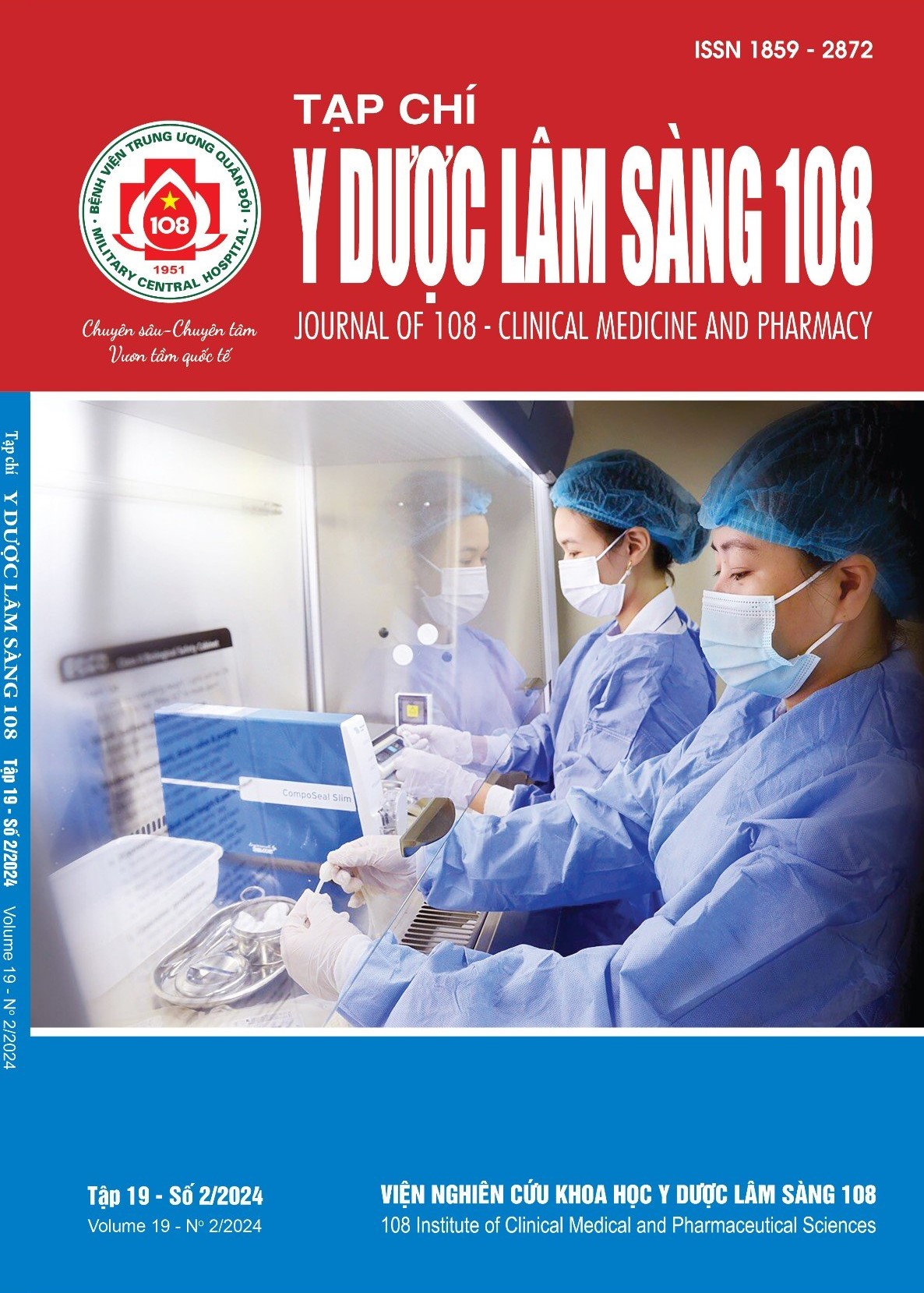Epidemiology, clinical and subclinical characteristics of children with atopic dermatitis at National Hospital of Dermatology and Vereneology
Main Article Content
Keywords
Abstract
Objective: This study aims to describe epidemiology, clinical, subclinical of 2- to 12-year-old children diagnosed with atopic dermatitis at National Hospital of Dermatology and Venereology.
Subject and method: This descriptive cross-sectional study was conducted on 160 children aged 2 to 12 years diagnosed with atopic dermatitis at the National Hospital of Dermatology and Venereology from September 2022 to August 2023. Result: There were 78 males (48.8%) and 82 females (51.2%). Mean age ( ± SD years) was 6.44 ± 3.09. The age group with the largest proportion was 2-5 years old (44.4%), followed by the 6-9 year old group (36.3%), and the 10-12 year old group (19.3%). The rate of onset of atopic dermatitis before age 5 was 65%, after age 5 was 35%. 47.5% of patients had moderate disease, the number of patients with mild disease accounted for 28.7% and the number of patients with severe disease accounted for the lowest rate of 23.8%. 12.5% children with atopic dermatitis were noted to have a history of allergies. Among 106 patients tested for peripheral blood smear test, 34.9% of patients had an increased eosinophil index. There was a statistically signiicant association between the severity of atopic dermatitis and the blood eosinophil index. Conclusion: Atopic dermatitis tends to have an early onset before age 5, with an equal male/female ratio. The group of patients with moderate disease accounts for the highest proportion. The eosinophil index of children with atopic dermatitis tends to increase and is closely related to the severity of the disease in children with atopic dermatitis.
Article Details
References
2. Illi S, von Mutius E, Lau S, Nickel R, Grüber C, Niggemann B, Wahn U; Multicenter Allergy Study Group (2004) The natural course of atopic dermatitis from birth to age 7 years and the association with asthma. J Allergy Clin Immunol 113(5): 925-931. doi: 10.1016/j.jaci.2004.01.778.
3. Salava A, Rieppo R, Lauerma A, Salo V (2022)
Age-dependent distribution of atopic dermatitis in primary care: A nationwide population-based study from finland. Acta Derm Venereol
102: 00738-adv00738. doi:10.2340/actadv.v102.2287.
4. Trịnh Thị Linh (2018) Nghiên cứu thay đổi nồng độ kẽm trong máu của bệnh nhân viêm da cơ địa trẻ em tại Bệnh viện Da liễu Trung ương. Luận văn Thạc sĩ
Y học, Trường Đại học Y Hà Nội.
5. Avena-Woods C (2017) Overview of atopic dermatitis. Am J Manag Care 23(8 Suppl):
S115-S123. PMID: 28978208.
6. Goldsmith LA, Fitzpatrick TB (2012) Fitzpatrick’s dermatology in general medicine. 8th ed.
McGraw-Hill Medical.
7. Trương Tiểu Vi, Nguyễn Tất Thắng, Văn Thế Trung (2018) Nồng độ IgE huyết thanh toàn phần và đặc hiệu trên bệnh nhân viêm da cơ địa tại Bệnh viện
Da liễu Thành phố Hồ Chí Minh. Tạp chí Y học thành phố Hồ Chí Minh, 22(4), tr. 125-129.
8. Vaneckova J, Bukač J (2016) The severity of atopic dermatitis and the relation to the level of total IgE, onset of atopic dermatitis and family history about atopy. Food Agric Immunol 27(5): 734-741. doi:10.1080/09540105.2016.1183598.
9. Burks AW, James JM, Hiegel A et al (1998) Atopic dermatitis and food hypersensitivity reactions.
J Pediatr 132(1): 132-136. doi:10.1016/s0022-3476(98)70498-6.
10. Hu Y, Liu S, Liu P, Mu Z, Zhang J (2020) Clinical relevance of eosinophils, basophils, serum total IgE level, allergen-specific IgE, and clinical features in atopic dermatitis. J Clin Lab Anal 34(6):23214. doi:10.1002/jcla.23214.
 ISSN: 1859 - 2872
ISSN: 1859 - 2872
